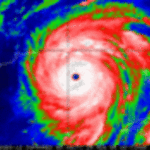After Ted Kennedy’s brain tumor diagnosis and recently seeing a complete list of famous names who died of (or survived) brain tumors over the last twenty years, it amazed me at how many there were. Most of the people who died of brain tumors are within the last 30 years, too, with huge increases during the 1990’s and 2000’s. It’s enough to make you think something we’re doing or consuming increased brain tumors in each ensuing decade. Some might argue that it’s the increase in technology causing more incidents of fatal tumors in the brain. Cell phones still get a suspect look at being one culprit, though it may not be the only reason. What’s interesting is that, out of all notable people, the most people who died from brain tumors starting in the 19th century to present were writers, musicians or sports figures.
I leave it up to you why that happened. But here’s a short and select list of names you’ll probably recognize who died from or survived brain tumors…
George Gershwin may be the most famous notable person of the 20th century to die of a brain tumor. What makes it so mysterious is that it was in 1937 when dying of brain tumors was much rarer than now. He had the worst and most insidious tumor that spreads fast without aggressive treatment: a Glioblastoma multiforme. Today, of course, people like Ted Kennedy can survive a little longer with similar malignant brain tumors thanks to chemo advancements. But in 1937, you were lucky to live a year after being diagnosed with one this severe.
What’s strange is that Gershwin reportedly had headaches before 1937, suggesting that he was getting signs of a tumor already when he was writing and staging “Porgy & Bess” in 1935 and 1936. Because Glioblastoma multiforme tumors develop fast, it could be his earlier headaches were just caused from stress. It has to be noted, though, that he was diagnosed with the brain tumor when he was already in an advanced stage of the tumor’s growth. That suggests he had it already for a year. What also gives that clue is that he died only one month after being diagnosed with the tumor.
If you ever read detailed books on Gershwin’s life, you’ll find out some of the horrible symptoms he had to experience as the tumor progressed. The 1945 biopic “Rhapsody in Blue” doesn’t even show a tenth of what he experienced such as uncontrollable drooling when drinking water, seizures and the tell-tale sign of a brain tumor: smelling burning rubber. It’s actually a myth he suffered mental blackouts while performing in concert.
To this day, there isn’t any rhyme or reason why Gershwin developed a brain tumor, unless his relentless work schedule made him more vulnerable to illness.
___
Irene Ryan was the actress who played Granny on “The Beverly Hillbillies” for nine seasons and is still a pop icon to this day. A lot of people probably have no idea that she actually died of a brain tumor. Most books that give the reason for her death list stroke. Well, yes, she collapsed from a stroke while performing on Broadway in the 1973 musical “Pippin” and flown back home to Santa Monica, CA where she died weeks later after being in a coma. The stroke was a direct result from having an undiagnosed brain tumor–perhaps already developing in the last season of “The Beverly Hillbillies” in 1971.
Ryan was one of the rare examples where she apparently didn’t have the classic symptoms of a brain tumor–or at least to the point of bringing on concern to go get checked out by a doctor. Some people are able to tune out headaches or other brain tumor symptoms, particularly if you’re an older person who might automatically think it’s nothing but old age. Yet, Irene Ryan performed nightly on Broadway for months beforehand and had perfect coordination as she sang and danced. It’s too bad she didn’t live to collect her Tony Award won posthumously just months after her death.
___
Gene Siskel managed to live more than a year after his diagnosis of a cancerous tumor in his brain. You probably remember him showing the physical toll the tumor took on his health in his last year of life while on “Siskel & Ebert.” But he managed to keep an active life without it impairing his ability to do movie reviews during that year of 1998-99. The only thing that he reportedly complained about was bad headaches.
It’s really interesting how a tumor in the brain can affect people in different ways, even in how they approach their life. I remember seeing the last show Siskel taped about a week before he died and noticing how good he seemed to feel and how sharp he was. Maybe it was medication keeping him pain-free, though it gives the thought that advanced tumors can put you into different states of emotion depending on the person. As with temporal lobe seizures (brought on by brain tumors on occasion) that can sometimes cause strange moments of bliss or creative enhancement, it’s possible that advanced tumors create odd brain sensations that we don’t understand yet, no matter how advanced the tumor may be.
___
Mary Shelley, the author of “Frankenstein”, may have been one of the rare people who lived with a brain tumor for 11 years before finally succumbing to it. Shelley is also one of the earliest notable people on record to die from a brain tumor in 1851. There isn’t any doubt that she had a brain tumor developing already in 1839 due to her experiencing bad headaches and paralysis of her arms and hands that inhibited her ability to write. She eventually collapsed and died on February 1, 1851–only to have her brain tumor suspected rather than confirmed.
In the 1800’s, doctors knew little about brain tumors, though knew they existed. There wouldn’t have been much they could do for Mary Shelley anyway had they been able to diagnose it properly already in 1839. But the fact that she managed to function (albeit with difficulty) for 11 years shows how tumors can vary a person’s life span. They seem to have increased in how fast they metastasize in the last 20-30 years, indicating that something in our modern world increases them–with the initial cause still a mystery.
Ironic, isn’t it, that Shelley uses the device of an abnormal brain in her legendary tale and why Frankenstein’s monster comes into being.
Those who’ve survived brain tumors in miraculous ways…
Elizabeth Taylor may be a legend some have forgotten had a mild brain tumor. Hers was a benign Meningioma tumor that’s fairly common in older women and can sometimes be malignant. Taylor was fortunate in that hers was in benign form when she was diagnosed with it in 1997. That means, as of this writing, she’s lived 11 years with hers when there are documented cases of Meningiomas growing and turning malignant before the ten-year mark. These kinds of tumors are one of the rare types associated with a particular cause. Whether Taylor was exposed frequently to weed killer or pesticides at her home isn’t known, but these tumors are almost always formed from being around similar toxins for long periods of time.
Of course, Elizabeth Taylor has other health problems (including, reportedly, congestive heart failure), yet has a survival rate that’s quite amazing and long-standing to say the least. Hopefully she’ll continue to beat the odds, including not having to give her last breath to a brain tumor.
___
Lance Armstrong hardly needs mentioning–though he’s probably the greatest example perhaps in the world (or history) in surviving a metastatic type of tumor that originally started out as testicular cancer and then spread to the brain. It’s an out and out miracle that he’s managed to survive this long–now twelve years and hopefully many years more. Add to that winning the Tour de France seven years in a row and you have either the greatest example of remission in a human being ever or true divine intervention here showing the strength of the human will to survive.
Armstrong obviously has to have a mental attitude that’s beyond the normal in most people diagnosed with illness. Convincing yourself that you’re going to be fine seems to have been proven now (with medical treatments and a personal faith) to bring a change in body chemistry to help shrink tumors and increase survivability rates.
And it doesn’t stop with just those two above people. Everybody from figure skater Scott Hamilton to Sen. Arlen Specter and Broadway star Sandy Duncan survived brain tumors, although with complications along the way. Duncan is one of the longest-surviving of all outside of having her left eye permanently damaged as a result of her tumor discovered in 1971.
All told, brain tumors seem to hit the busiest people who are both physically and cerebrally active. Whether there’s always been a correlation is still a mystery, but we have to keep being reminded that brain tumors are increasing in a time when we’re exposed to an onslaught of technology within every inch of us.






